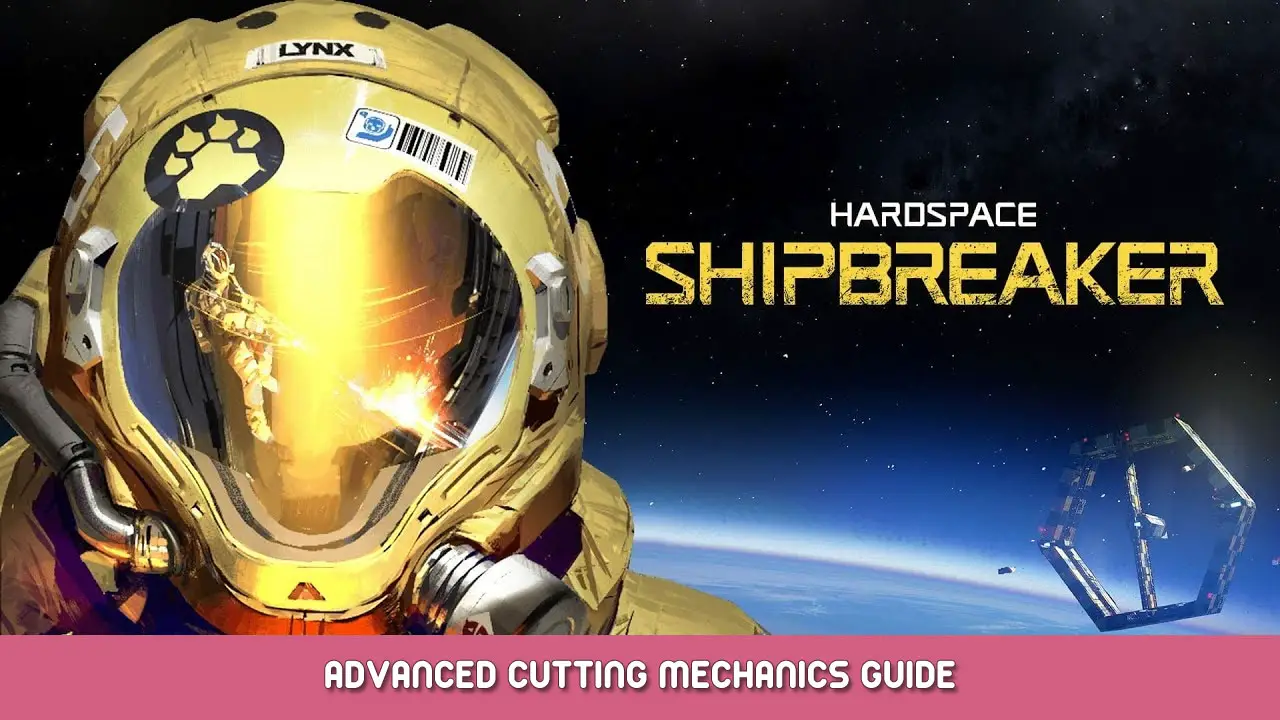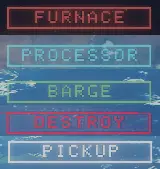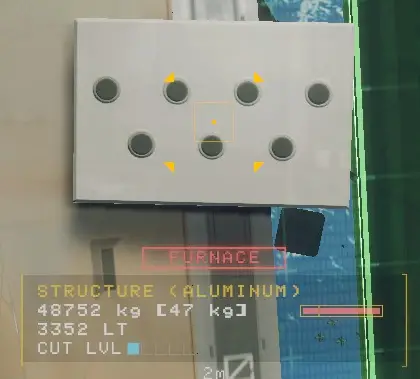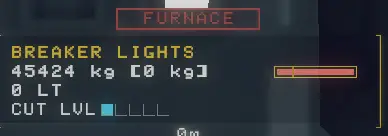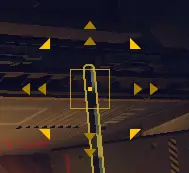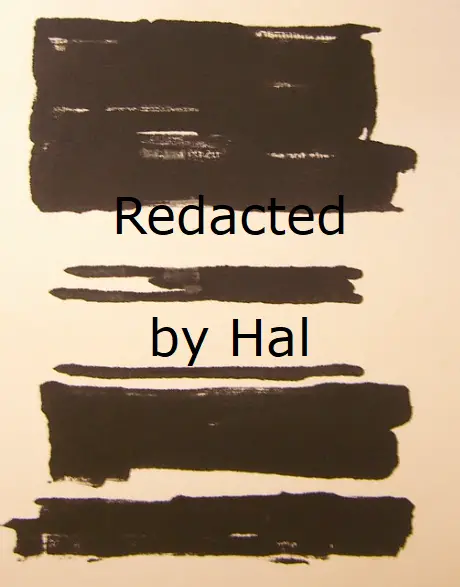This is a fairly comprehensive guide to the mechanics of advanced cutting and how it affects your parts and the bottom line, and how you can use that knowledge to avoid loosing that 0.1% and actually get to 100% (on most Mackerels and Atlases), and if not, how you can truly get as close as possible.
These are the observations Cutter 9346-52 has made after years of salvaging on how to cut more…
A Cutter’s Manifesto
An efficient cutter will salvage a ship quickly and precisely. Cheaper components get tossed into the incorrect receptacle in the interest of time or even stingered into oblivion. So whether you are R.A.C.E.ing or just playing with a normal 15 minute clock, you will pick up the habit to go fast, just like Lynx wants you to…
Aber warte… Nicht’t that voice in your head yell at you every time you destroy something? Every time you vaporize the smallest component or throw a useless door in the furnace? Make up your mind Lynx! Waste it or salvage it?!
After working in Morrigan Station for most of its Early Access and embracing the fast style, this cutter thought… how can I cut differently? WW9346-52D? (Most definitely the wrong thing!) What if I didn’t want to go fast, what would I do instead?
While many cutters have said “Du kannst’t salvage every penny” (momentan) because of how the ships are constructed, how close can I actually get? Are there more advanced techniques I can employ to actually “use the whole buffalo”! Can a cutter go all the way?
So I came up with a new goal for myself: to truly use the whole buffalo where you salvage every penny
möglich
, at all costs! Even if it costs you your life. Schließlich “Death is a fresh start.” (This document in no way condones the death of clones, basically because there is no benefit to that! Mindestens, that I can find… And I’ve tried! Das’s how I know smashing a frozen panel with my face won’t work.)
Minimize Destroyed and get Remaining as low as possible as a second priority to maximize Salvaged. Time is but an illusion.
And here’s what I learned after years of shipbreaking… that I knew nothing.
Grundlagen
There are three ledgers in the game: the Salvaged Ledger, the Remaining Ledger, and the Destroyed Ledger. When you salvage items at Morrigan Station, the value is subtracted from the Remaining Ledger and added to the Salvaged Ledger. The Remaining Ledger is the most Lynx will allow you to salvage from a given ship no matter what. There appears to be no exceptions to this, even if you find ways to salvage more.
Figur 1 – Salvage Methods
Don’t care items, like cut points and other miscellaneous items, have no listed value and can be dispose of any way you want.
Figur 2 – Don’t care chameleon item
Manche „Don’t care“ items act as a chameleon and occasionally appear to be the last thing you looked at. Jedoch, these are just “Don’t Care” Artikel.
There are many ways to destroy salvage. Destroyed salvage is subtracted from the Remaining Ledger and added to the Destroyed Ledger. There appears to be no exceptions to this.
Methods include:
- Reducing health to zero
- This only affects items with health.
- Collisions
- Morrigan Station itself is exempt from causing collision damage.
- Soft crates seem immune to this in Model 1.1.0.244339 Schiffe.
- Feuer, Strom, usw…
- Cutting will decrease health as you approach the Minimum Mass Requirement (MMR).
- Breaking up or cutting components
- Only components that have an MMR break this way (only some materials have no MMR)
- Freezing and impact
- Explosive decompression
- Scripted events
- Reactor chain reaction
- Pulling power bank before fuses
- Fully vaporizing
- Stingering
- Vaporization cutting
- Mis-salvaging
- Throwing in the wrong furnace/processor
- Leaving non-Barge items in the Barge at end of Shift
- Salvaging with AI Nodes
- Yeeting into deep space, that then has to be picked up by a salvage runner crew.
- Extracting components
- Notiz: If a Thermal Spreader has full health, Lynx won’t notice when you extract components from it and you still get paid in full.
Figur 3 – Extract component indicator
Disappearing salvage is similar to destroying it, except the Lynx accountants don’t notice. This still makes it so you can’t salvage the disappeared value, but the value stays in the Remaining Ledger instead of going into Destroyed Ledger.
- Collecting posters
- Most shave cutting
- Most split cutting
- Destroying an item worth nothing
- Cut points
- All Shippy parts (except fuses)
- Other Miscellaneous parts
- Notiz: An item listing „0 LT“ is not worth nothing, it is simply worth less than 0.50 Credits.
Figur 4 – Low cost item example
Komponenten
Component values are calculated in one of two different ways:
- Objekte – Objects have a fixed value that each item is worth, and it never changes until the item breaks. All broken items transform into “Retten” which is a material item generally worth less.
- Materialien – Materialien’ values are based on how much mass they have, so they can be cut into multiple pieces or shaved off, and the remaining value is based on the remaining mass.
Certain components can also have some of the following attributes:
- Some objects and materials can have health.
- A few of the health items explode when their health reaches zero.
- Some objects and materials can be frozen.
- Some objects and materials are flammable (Aber ich habe es nicht getan’t track that.)
Many of the components are breakable, which means they are no longer worth their original value, and are instead “retten” Müll. There are two common ways to break an item:
- Reducing their health to zero. If the item doesn’t explode at zero, then it becomes broken salvage.
- Reducing the mass of items below the MMR limit will result in broken salvage.
Items whose MMR is marked as “MVP” im
[docs.google.com]
, never get a chance to reach an MMR and vaporize instead and leave no salvage material to recoup.
The Art of the Cut
When cutting with the split saw or demo charges, there are multiple ways a cut can affect the bottom line.
The most basic type of cut is split cutting, where you split one piece into two or more. While at first glance it looks like you are destroying a small fraction of the item, in reality you are only decreasing the total volume, Und 100% of all mass is conserved. The Delphi Module Laser and Demo Charges use a Heisenberg Uncertainty Principle phenomena to convert the cut volume into a wave and tunnel it back onto the remaining mass to evenly redistribute the cut mass. This means for material items, no value is lost, not even a fraction of a penny. However most objects are broken by a split cut, except in a few exceptions when there’s a special spilt-breaking cut.
Notiz
: Because split cuts decrease volume and conserve mass, density is actually increasing.
A vaporization cut is like a split cut, except one or more pieces reach their Minimum Vaporization Point (MVP). When a piece becomes too small, it instantly incinerates and those portions are destroyed. Lynx takes the value of the vaporized portions and adds it to the Destroyed Ledger and removes if from the Remaining Ledger. Preventing you from reaching your maximum potential.
A shaving cut occurs when you cut on the edge of a component where the width of the cut leave no material on the one or both sides. Since a new piece is not created and vaporized, no value is counted as destroyed. Jedoch, the mass of the cut is not redistributed, and instead
verschwindet
. The value is not added to the Destroyed ledger or removed from the Remaining Ledger. Shaving cuts (and picking up posters) are the main reasons why after the salvage bay has been 100% cleared, there is still significant value left in the Remaining Ledger.
Extracting the glass out of a Mackerel is one of the most common examples of shaving cut losses.
Most objects do not have an MMR low enough to result in a successful split cut, instead they are usually vaporization cuts or shaving cuts. However some items have an MMR in the 80%s or even lower. This means it is actually feasible to cut off a piece of an object large enough that it does not instantly vaporize. Jedoch, this is bad news for us cutters. For when this happens, Lynx tracks that as a new item of the same type! As this new item is almost definitely below the MMR, it is instantly broken and added to the Destroyed Ledger and removed from the Remaining Ledger. So while this means you have the full cost of the original plus some salvage, it actually decreases the total amount you can salvage.
MVP
When cutting up items, eventually they will be cut so small that it reaches a Minimum Vaporization Point (MVP) and instantly vaporize. The actual limit appears to be a combination of mass and volume and varies for every type of component. The exact values the Delphi Module Laser and Demo Charges use and how the volume affects it are highly classified by Lynx, Also ziehe ich es an’t currently know the exacts.
MMR Theory
One of the most controversial theories among cutters is MMR Theory: Minimum Mass Requirement (or Minimum Mass Ratio when expressed as a percentage). It is often discarded for it’s inconsistent results, however this inconsistency is actually cause by damage that decreases an item’s Gesundheit. Only the most astute cutter will factor in this to consistently get reliable results.
MMR Theory states that Lynx monitors the percentage of remaining mass for a breakable components. If the mass falls below the MMR threshold, it is broken, markiert als “Retten” and is no longer worth it’s original value.
For components without a health indicator, the MMR is fixed and easy to monitor. Approximate MMRs are listed in
. Occasionally the exact MMR was determined, and in those cases and exact ratio was entered as a MMR% and marked in green. Unfortunately Hal found a way to put an end to the funding before all the MMR%s could be determined. Items that are already at or near their MVP cannot be broken by shaving off mass because they will vaporize first, and have `MVP` entered as their MMR.
Component with health behave a little different. Removing mass from health components will actually subtract from the health proportionately. The mass limit is reached when the health hits zero, and the item breaks. Since Lynx factors the health of the item into the calculation, losing health from any other means, result in the the mass limit decreasing as well and you will not be able to achieve the true MMR. This means extra care needs to be take to not damage an item when encroaching on the MMR.
Stuck in a Joint
The first thing you learn as a cutter is to vaporize cut points. What you were actually doing was removing a cut point that held two larger items together by quantum nanobots called joints. Ever single item and material in the ship is held together by a complicated system of joints.
The weakest joints in the game can be removed simply by using the grapple to yank it free. These joints are indicated by the moving arrows pointing out of the recital on your HUD.
Figur 5 – Grapple Joint
For the rest of the joints, vaporization is the easiest way to free up joints holding two or more pieces together. Jedoch, unless it is a worthless cut point, vaporizing material comes with a cost.
The joints holding a ship together can seem to defy logic, but this is mostly because the nanobots holding a ship together shift around as you partially free items, creating behavior that this cutter cannot define with rules. Zum Beispiel, a piece of nanocarbon that should be free, is still being held on by a joint before the final cut point is destroyed.
Figur 6 – Nanocarbon strangely being held together
Not being able to explain the rules of the behavior has not stopped me from learning it and using it to remove parts without incurring a cost.
By using a mixture of split cuts and shaving cuts nearly all difficult items can be freed without incurring any losses.
Bane of my Existence
Figur 7 – Bane of my existence
I cannot for the life of me find a way to get the coolant pipe off of the back of the ECU, part CP-JX9. This is the one component to plague me and it is in all Class II Reactor ships. It is unfortunately worth a lot at 13,891 Credits! The loss incurred from this makes all the other savings pale in comparison. It keeps me awake at night, haunts my dreams, and mocks me daily. There must be a way to remove it safely! I must find a way to destroy it… without destroying it. Or not…
Colder than Absolute Zero
One way around the MVP and even on rare occasion MMR, is to freeze an item and break it up with an impact. While a useful tactic, this can be incredibly time consuming.
The advantage of using coolant to break something free is that like a split cut, no value is lost. The density of the pieces remain the same, Aber 100% of the mass is conserved, and thus value.
While frozen object can be broken into pieces smaller than the MVP, these frozen pieces have their own limit for the smallest possible fragment. Once a fragment become too small it will eventually break up into dust and silently be counted as destroyed value. When using this method to break something free and conserve all cost, the impact used should be as light as possible to prevent masking fragments too small.
The details are:
Figur 8 – “Redacted[www.flickr.com]” von Jack Zalium[www.flickr.com]/CC-NC[creativecommons.org]/Text added
Zusammenfassung
Using a mixture of split cuts and shaving cuts with joint knowledge, I can successfully salvage everything without any loss, außer:
- Cockpit glass on Mackerels and Geckos
- Too expensive to shave off in Mackerels
- You hit the MVP in Geckos
- ✅Can be removed with coolant, but time consuming on Mackerels
- Radiation Containment Unit
- ~$4000 to shave off
- ✅Can be removed with coolant, but time consuming
- Cockpit doors
- ~$1-10 to shaved off
- ✅Can be removed with coolant, Ziemlich einfach
- A specific square door on Atlases
- ~$1-10 to shaved off
- ✅Can be removed with coolant, but time consuming
- The back plate of Atlas Nomad Cargo Haulers
- ❌ The nanocarbon used on Model 1.1.0.244339 ships appears to be subpar and goes directly into the furnace instead of being reused in the processor. Hopefully as we burn through this stock of Atlases, and get the next version they will have been constructed with quality materials.
- The Bane of my Existence
- ❌ No method has yet to be determined to salvage this without destroying the ECU or CP-JX9 first
- ❌ All shaving cut attempts so far have hit the MMR and reduced it to salvage
- ❌ Immune to coolant
- A few other rare random combinations usually involving the placement of the reactor plate
- ✅Usually can be freed by split cutting
- ❌Occasionally cannot due to being jointed to an item that will reach its MVP or MMR first
So if we avoid these impossible components, can we actually salvage 100%? Ja, you totally can. As long as you make no mistakes, it is actually possible!
Can we salvage more than 100%? The answer is yes and no… but really no. It is possible to salvage more than the amount in the remaining through a some account errors that are not covered here. Jedoch, Lynx will not pay you more than the total value in the remaining ledger, immer. So towards the end of the salvage, you will not be getting paid for the salvage amount past the remaining amount. Just another way the corporate overlords keep us down.
Das ist alles, was wir heute dafür teilen Hardspace: Schiffsverschrotter Führung. Dieser Leitfaden wurde ursprünglich erstellt und geschrieben von the1within0. Für den Fall, dass wir diesen Leitfaden nicht aktualisieren können, Sie können das neueste Update finden, indem Sie diesem folgen Verknüpfung.
